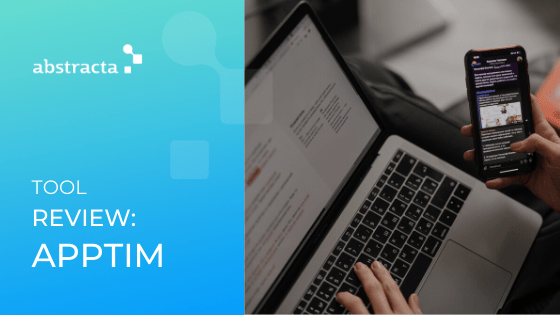Introducing Continuous Integration and More Ways to Use Monkop
With mobile application testing being more important than ever for app success and maintaining a healthy brand image, developers need to make sure their apps’ performance, functionality, UX/UI, etc are in top shape. Being mobile testing enthusiasts, we’d like to present our mobile testing tool, Monkop, by our team of in-house developers lead by creator, Fabian Baptista.
Monkop is a first-of-its-kind tool for testing Android apps on real devices. With Monkop, developers can quickly troubleshoot their app for real problems, avoiding bad ratings in the marketplace. We are proud to have just announced more ways than ever to use Monkop, making it a highly flexible and painless step to add to your continuous mobile testing routine.
Here is a general explanation of the different ways to use Monkop for enhancing mobile app quality. If you pick at least one of these, your users will thank you!
1) Robo Test
Monkop as a Monkey: In this scenario, you use Monkop as a monkey or “crawler” to explore any issues your app may have. You just upload your app and Monkop will discover all of its flows and give you feedback sent to your inbox as a report. In the report, you will receive custom tips for how to improve your app (ex: check if it installed/uninstalled on all the real devices, crashes, and performance stats). To maximize Monkop’s coverage, you can also add the data to be entered in each screen so the monkey can use it to reach more places inside your app.
This is very useful for early testing stages (for example: before sending the initial version to your testing team, you will want to make sure that the app at least installs on all Android versions and is initially crash-free).
On the other hand, after releasing your stable version to the market, you will want to know your app’s behavior and performance on a wide range of real devices, putting the monkey to work for at least 30 minutes on each device.
2) Script Automation
Monkop running your step by step script automatically: The second way of using Monkop consists of running your own scripts (in Robotium, UI Automator, Espresso, etc), then Monkop collects all the information to give you tips to improve your app’s performance. This approach is very useful for regression tests. You can combine both approaches, monkey testing and script automation to give you better results.
3) Mobile CI with Monkop
Monkop in your build pipeline: The third approach integrates Monkop with your Build Pipeline. The best way of using Monkop is integrating it into your continuous integration tools (Jenkins, Travis, etc). It is the easiest way of adding smoke/sanity tests to your CI tool with no effort, no matter if you are looking to utilize one or both of the approaches above.
4) Monkop Server
The monkey dwells in your own office: The fourth way of using Monkop is installing the whole solution in your own office. Monkop can be run as a lab manager in which you may use your own device lab and servers to test your apps.
No matter what your goals for testing are, Monkop can help you achieve them.
Which approach works the best for you?
Leave us your comments!
Recommended for You
5 iPad Gestures Testers Should Know
[Infographic] What is mobile accessibility and why is it important?
Related Posts
Mobile Application Testing Strategy: How to Take The Security of Your Mobile Apps to the Next Level of OWASP
What is OWASP and why is it becoming increasingly relevant in the IT industry? What methods exist to complete validations according to its security standards? Take a look at this article from Matías Reina and take its input in mind for your mobile application testing…
Apptim Review: Mobile App Performance Testing Tool
A new trick up your sleeve for manual mobile app testers and developers Whether we’re using mobile apps to send money to a friend, edit a photo, send a message… It’s important that they be easy to use, don’t take ages to load, or take…
Search
Contents





 Abstracta
Abstracta
